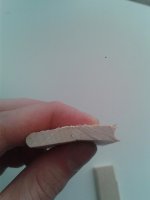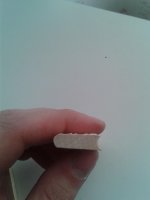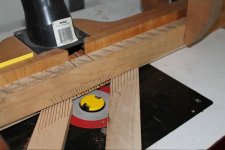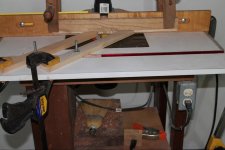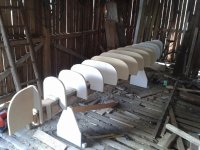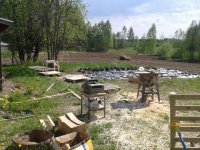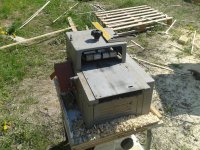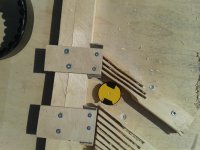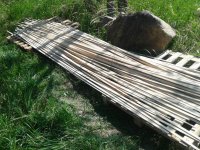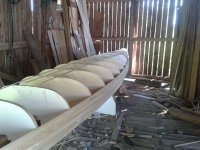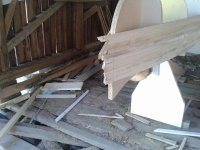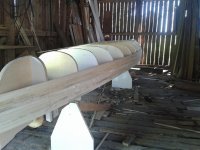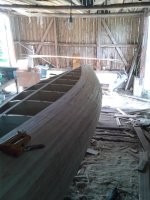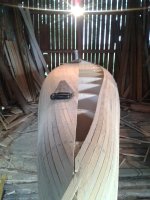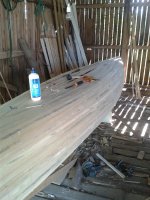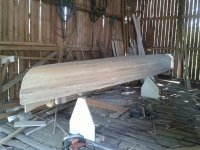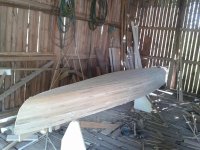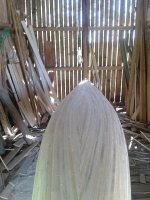I would suggest, if you want to use narrow cloth to determine a "waterline or sheerline" even if it is hypothetical. measured at let's say 6" below the rail. When the first layer of cloth is on the bottom and almost cured but still soft, razor blade along that line and remove the waste. As the epoxy cures at the edge, use a squeegee and keep working it until the fiberglass edge is flat. Then it is a simple matter to add a 6 or 8 in wide strip above the newly determined line with just a slight overlap. It will be almost invisible visually because the lap will be downward. We stopped using brushes and rollers and only used plastic squeegees to work epoxy,. It's real hard to get one's mind away from thinking epoxy is paint, it is NOT paint.
As mentioned, it is also okay to do a seam down the middle of the bottom.
As mentioned, it is also okay to do a seam down the middle of the bottom.

